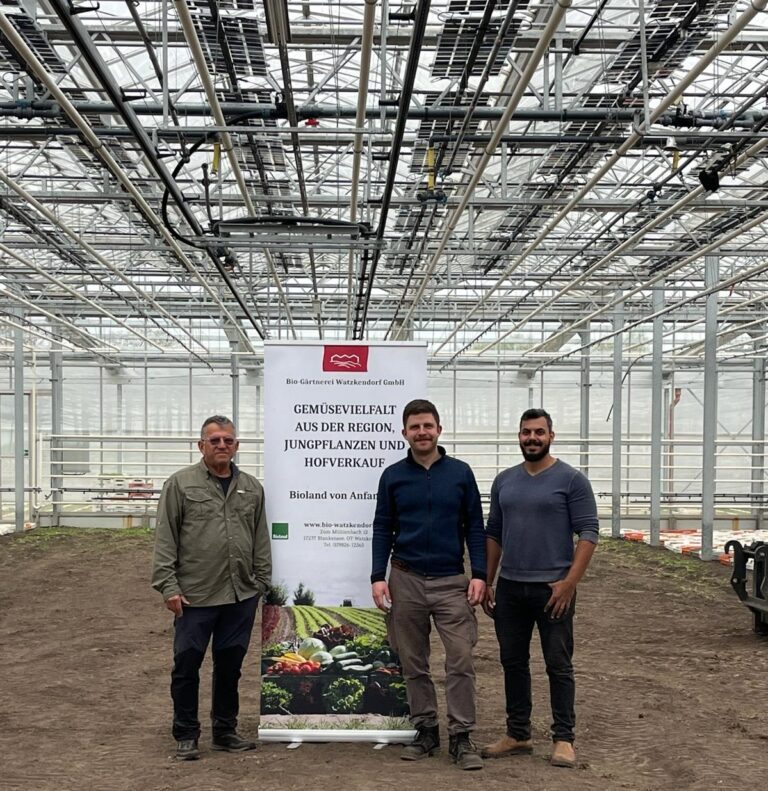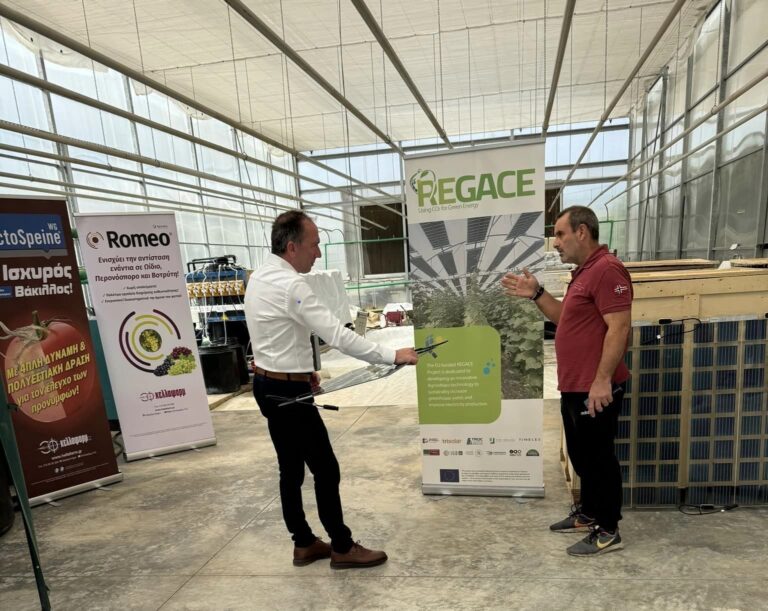By Michael Eilan
We just got back from a fascinating visit to our REGACE partners from the University of Thessaly, Prof. Nikolaos Katsoulas and Prof. Chrysoula Papaioannou.
The visit was a part of a process in which the Alzahrawy and TriSolar teams visit partners to physically look at their greenhouses and discuss the best ways to install the responsive tracking systems that will be used in all REGACE experiments.
It also great physically meeting Nikolaos and Chrysoula. We spent two busy days with them, both on their greenhouse facilities as well in meeting farmers and greenhouse professionals – and also enjoying their magnificent hospitality!
What we saw and heard was the tip of an iceberg in terms of depth of knowledge and expertise about greenhouse horticulture, and especially growing crops in controlled hydroponic conditions.
We, Alzahrawy Chief Scientist Ibrahim Yehia, TriSolar CEO Ronen Katz and Michael Eilan were especially excited by the idea of installing the TriSolar responsive tracking system in the greenhouse and then experimenting with raising the electrical yield with CO2 enrichment, which is what REGACE is all about.
We were especially gratified to learn that Nikolaos and Chrysoula had chosen their largest and most sophisticated greenhouses to install the systems. These are large, high greenhouses with impressive infrastructure elements such as automated shading, fertigation and heating systems. No less impressive (and maybe even more so) were the custom-built control software that controls all aspects of the hydroponic growth of vegetables.
The University of Thessaly’s contribution to REGACE is especially valuable because of the expertise that Nikolaos, Chrysoula and their team bring to the table on the subject of hydroponics, a way of growing food that is growing in importance in recent years. The responsive tracking system can resolve hydroponic needs for energy resources and CO2 enrichment can ensure that this energy will be available even in winter.
Other, non-REGACE experiments, in nearby greenhouses were also fascinating with interesting work on aquaponics – using tilapia fish in tanks to provide the fertilizer for hydroponically grown vegetables and using infra-red light to grow algae to feed the fish. This is the truly circular economy that Nikolaos and Chrysoula are developing. We, of course, were pleased, because all these activities need electricity, which is what we provide, making us very happy that were can supply the power for their vision.




